The Beautiful Abundance of Spring Migration
Who are you, and why were you singing, so intimately sonorous, so uselessly precise?
Our feathered friends have arrived. We had our first big wave of spring migrants show up on May 6 this year. Migration is now in full swing and will reach its peak in mid-May. The woods that have been relatively quiet for months are now alive with song. Little feathered gems dance on the tips of the branches. A great pulse of life, joy, and exuberance has swept over us. Every day has the potential to give us a beautiful gift.
Some people are more open to appreciating this gift than others. Dedicated bird watchers travel around the world to watch birds, while the bulk of humanity cannot be bothered to take notice. Somewhere in the middle of this spectrum is a sweet spot. For me, watching birds is about mystery, time in nature, beauty, hope, connection, and the peace that comes from entering a state of flow.
Rufous-collared Sparrow by Pablo Neruda
You awakened me yesterday, friend,
and I went out to meet you:
the universe smelled of clover,
of a star opened in the dew:
who are you, and why were you singing
so intimately sonorous,
so uselessly precise?
Why did the fountain flow
with your trill’s precision,
a drop of water’s clock,
your fragrant little violin
questioning the plums,
the indifferent headspring,
the color of lizards,
asking pure questions
that no one can answer?
I had no sooner seen you, passerby,
minuscule musician, fresh
daybreak’s tenor, proprietor
of morning purity, then I
understood you were bringing back
with your little water flute
so many things that had died:
so many petals buried
beneath the smokestacks,
the smog, and the pavement.
Your crystal performance
brings us back to the dew.
When I have close encounters with birds, the world falls away and for a few moments, the bird I am watching is all that exists. I find this to be very compelling, as it is centering and engenders a sense of calm. It also never fails to make me happy. Especially this time of year when the woods are in bloom and the sunlight is filtered through new, bright green leaves.
Birding is also a social occasion. This is the time of year when the woods fill up with birds and birders. We have found our community with fellow birders. Within this community, we share a love of birds. When a brilliant warbler shows up, it is the focus of the conversation, and our differences fade into the background. On a recent trip to one of our local parks, we were watching a Hooded Warbler forage for insects on the ground when I heard my name being called. I looked up and saw my favorite high school student and leader of our local young birder's club speeding down the trail about 50 yards away.
He rounded the corner and blurted out, “Hey Bill! It’s incredible. We just saw 12 Golden-winged Warblers.” He had a heavy camera dangling from a strap on his shoulder, but he couldn’t be bothered to think about the camera at that moment. He was wringing his hands as he recounted his experience seeing the woods full of warblers. His eyes were shining and he was beaming. It must be noted that he is normally understated. This was the most animated I had ever seen him. Such is the power of birding. He got even more animated when we told him that we just saw a Prothonotary Warbler foraging in the creek. “No way!” he exclaimed, as he wished us good luck and headed off down the trail towards the creek. He was gone in a flash, just like the birds he loves.
Later that afternoon we led a bird walk at a small urban park that is being restored to a native oak-hickory woodland and floodplain forest. There was a threat of rain so we expected somewhere between 10-20 people. Our town had advertised this walk on social media, so we were hoping for a good turnout, but inclement weather tends to limit attendance.
We stood in the shade along the creek and waited for people to show up. It pretty quickly became apparent that turnout would be good. Our hard work on behalf of our local Audubon Chapter was starting to pay off. We were surrounded by old and new friends. Some of them were young people. When we started the walk, we divided the group of 40 into three smaller groups and set off down the path along the creek.
We quickly encountered the pair of Phoebes that was nesting under the bridge. They perched out in the open at eye level. A few minutes later we encountered our first mixed flock of warblers. I described the location of a Northern Parula foraging in the top of a small Bur Oak tree. Then, the challenge began. The tiny warbler was foraging for insects and was mostly obscured by leaves as he hopped, fluttered, and probed the tree in search of food. People caught glimpses of him, but he did not provide us with a satisfying view.
Just then, I caught movement off to my left that my mind registered as a thrush. Except, that this bird was red. It was a Summer Tanager, and she was flycatching right over the trail. She perched on a bare limb out in the open and sat there for a few minutes. It was an ideal scenario for the new birders, and everyone got a good look at her.
The highlight of the walk occurred as we made our way back to the creek. I heard someone exclaim, “Look! A bluebird and an Indigo Bunting are bathing in the creek.” The whole group quickly lined up on the bridge, and we were treated to a spectacle.
It was 3 p.m. The sun had just come out, and the birds had decided it was time to take a bath. The brilliant blue plumage of the bluebird and bunting were reflecting the sunlight as they splashed in the shallow water within 2 feet of each other. I noticed that other birds were starting to congregate in the branches nearby, and it quickly became apparent that they were waiting their turn to bathe. They were staged like planes at an airport. They started high in the canopy and gradually made their way down closer to the water until they were perched a few feet above it. The presence of the other birds was reassuring, and they quickly dropped down to join the party.
Purple finches, Yellow-rumped Warblers, Goldfinches, Tennessee Warblers, Rose-breasted Grosbeaks, Cardinals, Robins, and the crowd's favorite - Blue-winged Warblers - all bathed in the same small riffle in the creek. The next 30 minutes were magical! Everyone got extended, clear views of the birds in the bright light reflected off the water. The Blue-winged Warblers appeared to be plugged in. They were brilliant yellow and, somehow, stood out among a group of male Goldfinches.
People were ecstatic, and they thanked us profusely for this beautiful experience. Eventually, the birds and birdwatchers dissipated, and a small group of us were left standing on the bridge. My wife had bonded with a group of 5 women from across the globe - one from Jordan and one from Iran - for whom this was their first bird walk. They were very enthusiastic, and a few minutes after the walk ended they all joined our Audubon Facebook group.
One of the reasons our bird walks resonate with people is that we are careful to set reasonable expectations at the beginning of each walk. We also make sure people know how to use their binoculars. One of the keys to enjoying birding is to have the right frame of mind. I find it helpful to think of birdwatching as a lifelong treasure hunt.
Most birds are operating at the speed of insects, which is to say, they are very fast. They rarely stop moving, and when they do, it is typically only for a few seconds. Migrating birds need to refuel and put on weight for the rest of their arduous journey. They operate on a tight energetic budget, and their high metabolisms are unforgiving.
If you want to see them clearly, you need to be proficient with binoculars. Here is how to do that. Clean your lenses and make sure your bins are adjusted to your eyes by turning the diopter adjustment ring to ensure you have a clear view in both eyes. If you wear glasses, push or fold the eye cups down.
Now it is time to practice. Go outside and imagine that you are looking for a bird in a tree or shrub. Pick out a distinctive spot like a fork in a tree limb, dead leaves, or a pattern of light, and keep your eyes focused on that spot. Now, bring your binoculars up to your eyes at a moderate rate of speed. Hopefully, you end up seeing the spot you were looking at. If not, keep practicing this until you can quickly find that spot in your bins. When you are birding you will do the same thing, but you will add a bird to the process.
This is also a good time to get familiar with your focusing knob. It helps to know which direction to roll the knob so you are not engaging in trial and error the moment you are trying to see a bird. You typically must go through this process of finding the bird many times to see a bird like a warbler. When you do see them, it is often a partial view of a rapidly moving bird. When you keep repeating the search process, you end up creating a composite image in your mind based on multiple views of different parts of the bird. For some species like the Magnolia Warbler, you only need to see the underside of the tail or some other diagnostic feature to confirm its identity.
Another point to consider is that light is really important for seeing details in a bird. There are situations where a bird is foraging in the upper canopy in dense foliage and is backlit. Even if you find the bird in this situation, you will not be able to see much detail. Sometimes it is better to just wait for a bird to appear down low in good light.
Understanding bird behavior is helpful for getting good looks at birds. Birds are often foraging in dense cover, and if you can predict what they might do, you can pre-focus on a spot and wait for them to appear in that location. Species like the Black and White Warbler are an example of a relatively predictable bird. They forage like a nuthatch by climbing up trunks and along tree limbs. If you spot one in the shade or behind leaves, but you see that he is moving along a branch, you can focus on a sunlit part of the branch ahead of the bird, and he will often move through that spot.
The habitat you are in can also have a large impact on the quality of the views. Dense cover makes it more challenging to get clear views, while filtered light coming through an open canopy can provide stunning views.
Within a mixed flock, one bird typically moves first, often a Chickadee, and then more follow. There is often a distinct pattern where they tend to move in one direction, but it is amorphous and unpredictable. Watch for the movement and direction of the flock and pay attention to light and available perches. In doing this, you can predict their future location to an extent. Put yourself in a good position to observe them as they move to you. You can also get a sense of the different foraging styles, and it pays to focus on birds that are a little slower. Vireos are an example of spring migrants that move a little more slowly than warblers. It is best to start with slow birds.
Flocks of birds are as ephemeral as clouds. Shapeshifting, fading, swelling, and vanishing before your eyes. Developing a little skill with your bins and coupling that with patience can really pay off. It is very exciting and rewarding when you end up immersed in a mixed flock and you can pick out and see different species. The key is being patient and grateful for the views you get and learning to appreciate subtle glimpses of beauty.




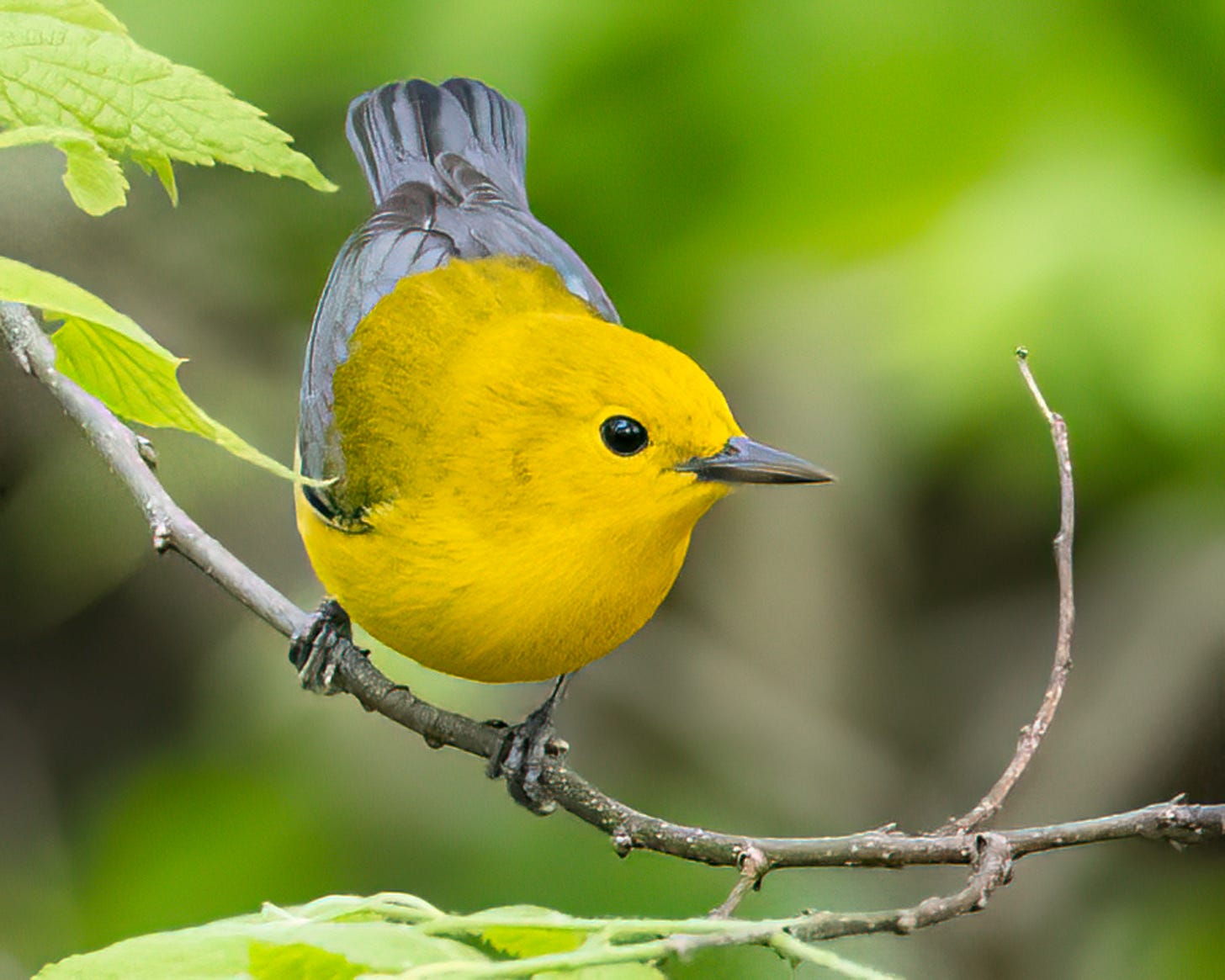


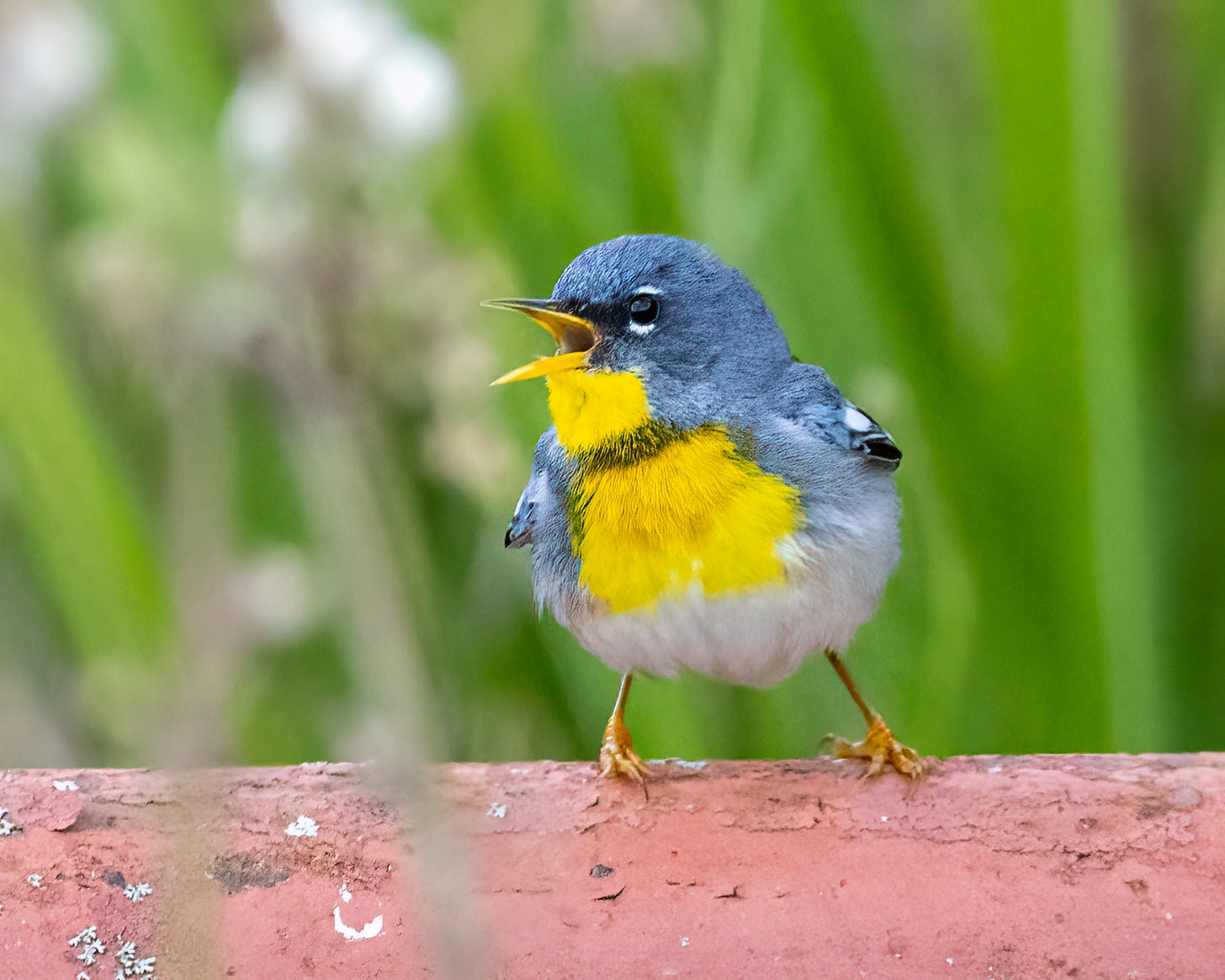
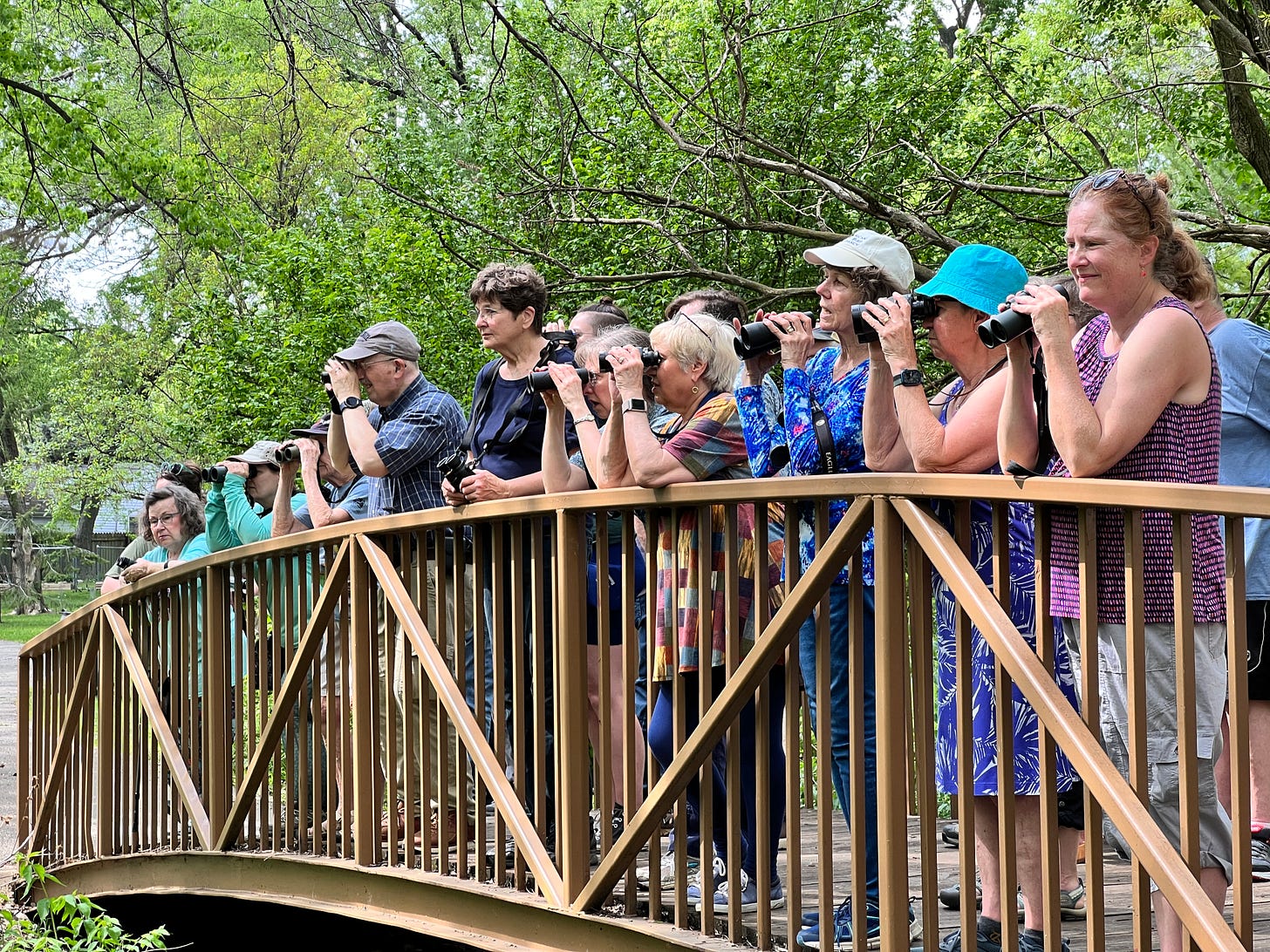

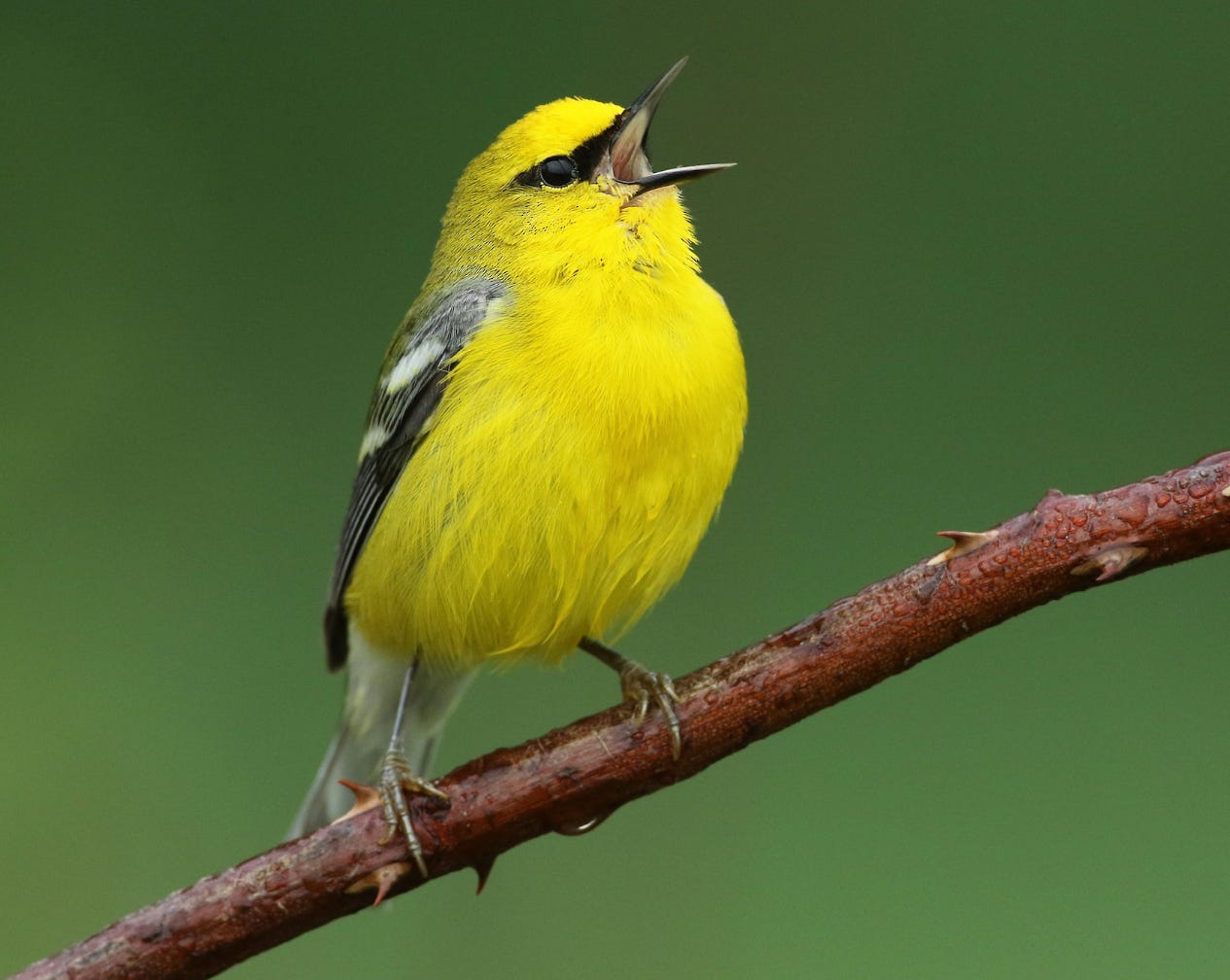
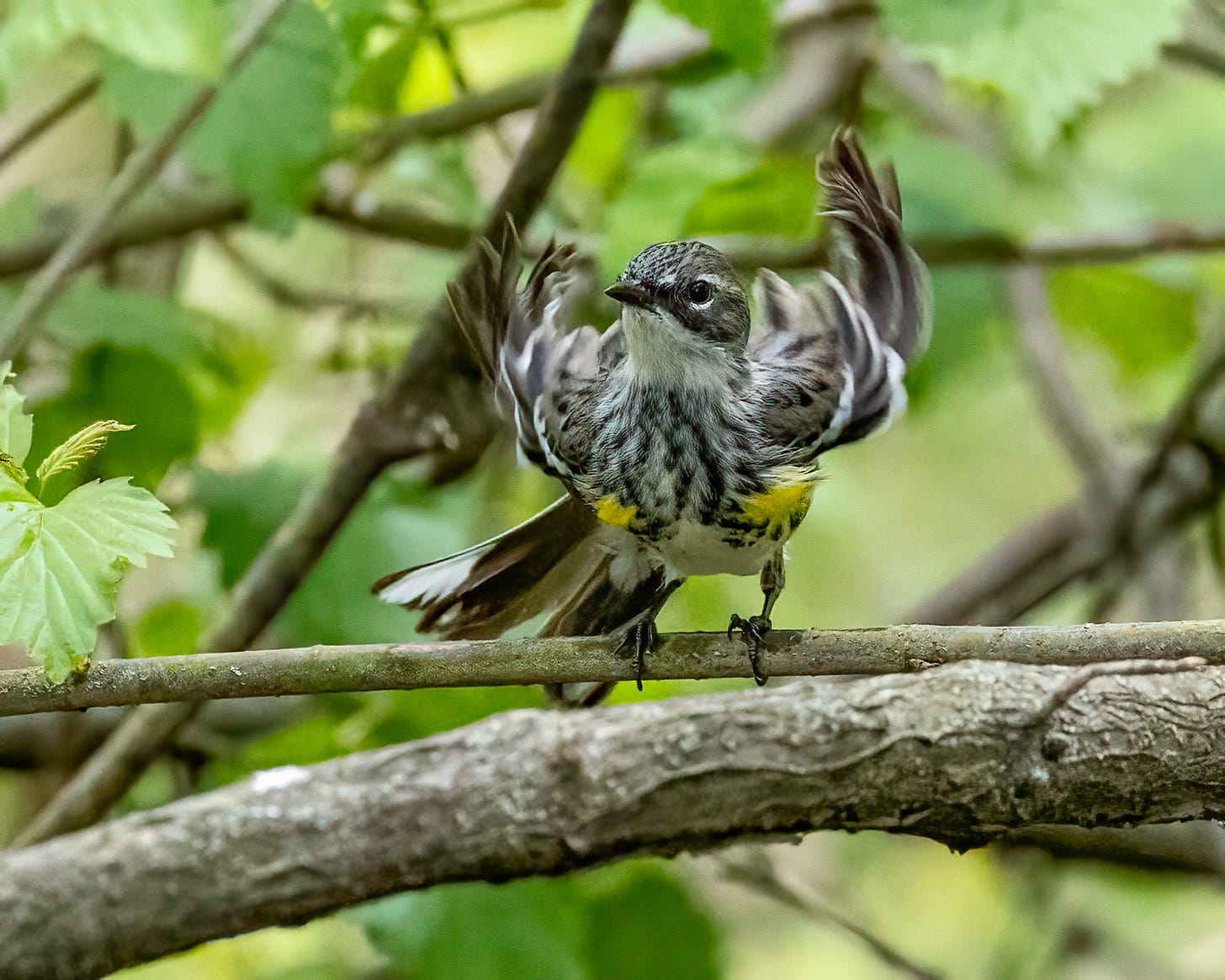
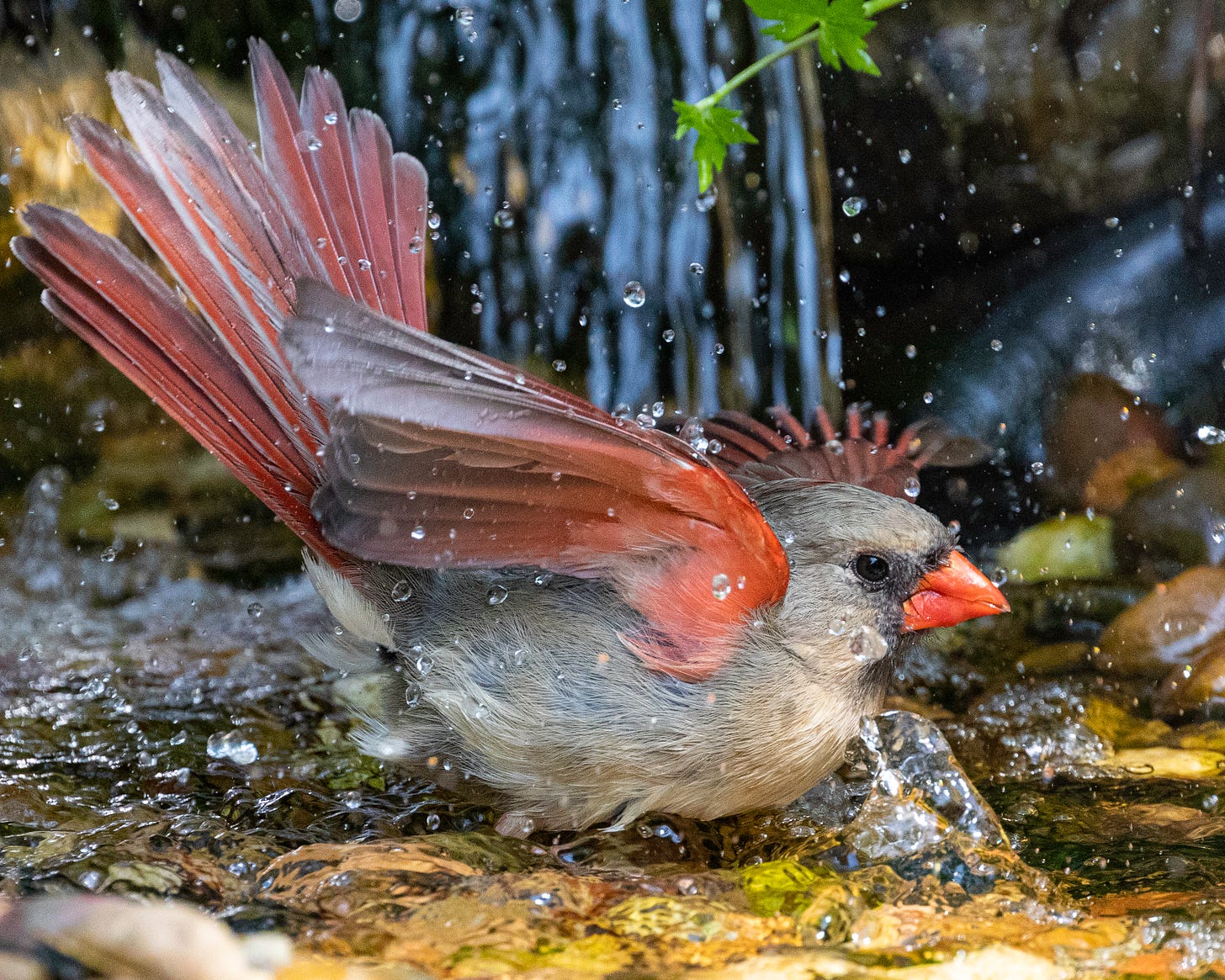

Your photos are incredible, as is the diversity of birds you're getting in Normal. 12 Golden-winged Warblers?! Any one of these Eastern goodies would set off a frenzy here in Denver! So wonderful that you're sharing the joy of birding with the community.
Hope is the thing with feathers
That perches in the soul
And sings a tune without words
And never stops at all.
By Emily Dickenson